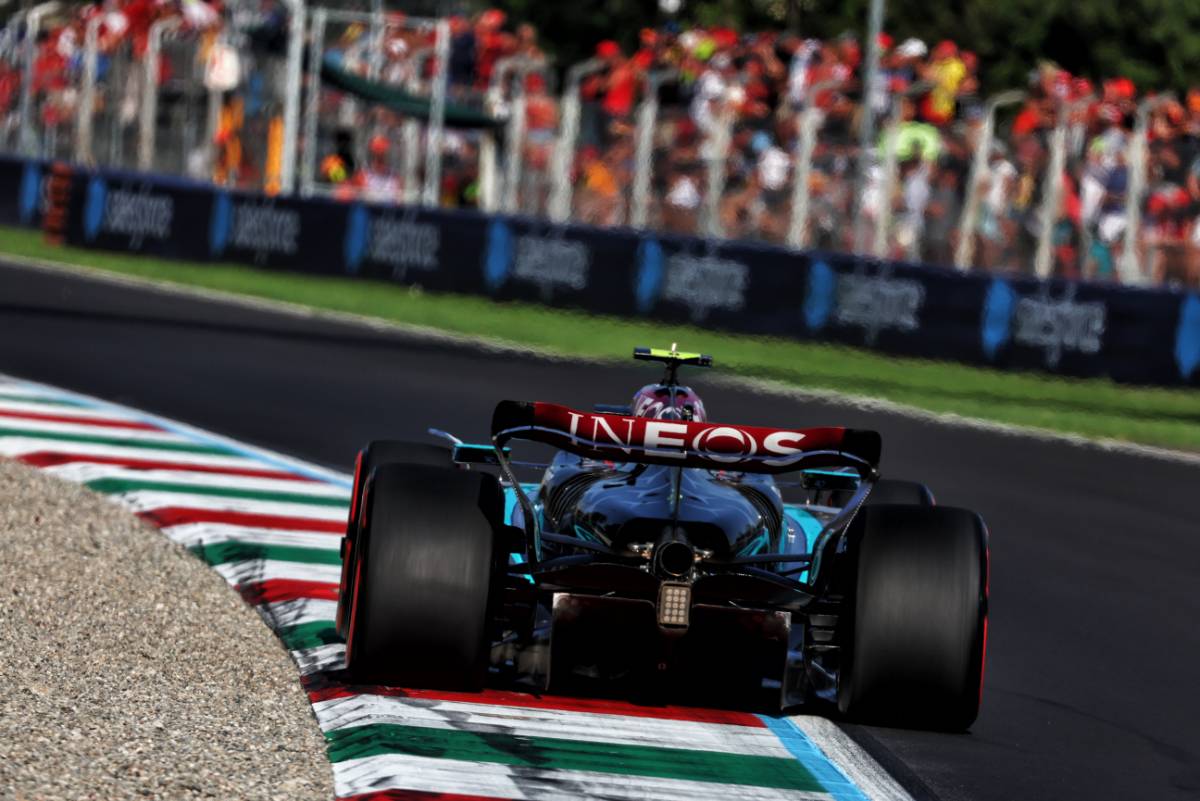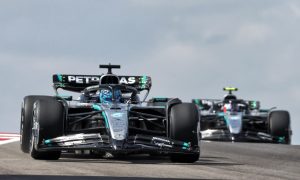
Mercedes will reportedly abandon its problematic floor introduced at Spa for this weekend's Azerbaijan Grand Prix, as the team seeks to understand if the new component has been the root cause of its performance struggles since the summer break.
Mercedes put its new floor to the task in free practice at the Belgium Grand Prix but eventually opted not to race with the modified component fitted to its car, which didn’t prevent George Russell and Lewis Hamilton from finishing 1-2, although the former was disqualified after his W15 weighed in underweight.
The Dutch Grand Prix after F1’s summer break offered an opportunity to test both versions of the floor back-to-back, but bad weather thwarted those plans.
The team did manage to complete the test at Monza, but the results were inconclusive, and Mercedes opted to run the newer floor for the rest of the weekend.
Despite George Russell outqualifying Ferrari’s Charles Leclerc at Monza, neither he nor Hamilton could challenge the leading cars during the race.
In Baku, according to a report from Motorsport.com, Mercedes has decided not to use the Spa floor at all, instead opting to run the older specification to gather a full weekend of data on how the W15 performs without it.
While the team is keeping other recent upgrades—such as those to the diffuser, beam wing, front wing, and halo—it hopes that rolling back on the floor will provide clarity on the car’s true potential.
Queried on his team’s development plight and Mercedes inability to revive its mid-summer form, Hamilton was unsure of the root cause of the issue.
"There are lots of question marks on a lot of it,” he said. "I think we're just trying to understand it.
“It could be a number of things. It could be track-dependent, it could be the upgrade. My gut is telling me it could be the upgrade but it's hard to see the difference between the two.

©Mercedes
"But we're going to try this weekend [and] roll back on some of it and see whether or not we can spot it.
"There's a lot of work going on just to analyse it because it gives the team a better direction of where they're going for development, not just for this car but for next year as well."
Mercedes is keen to determine whether it needs to adapt the floor or other areas of the W15 for the remainder of the season, or potentially even abandon the floor altogether.
Although the team believes the floor is a step forward in terms of downforce, the gains have been minimal and not as impactful as hoped.
Russell agreed that the upgrade had not delivered the expected performance boost.
"The upgrade wasn't a substantial performance improvement and sometimes you've got to look at things just objectively,” he admitted.
"And we brought a new floor, we dropped in performance, and that was the main thing that that changed.
"We knew the upgrade wasn't kind of going to set the world on fire. It was just sort of another step in the direction that we've been pursuing.
"So, reverting to the pre-Spa iteration of floor, if everything were to be absolutely correct on paper, it's a small delta.

"It's better the devil you know sometimes. We know what that floor offers. We know exactly where the setup needs to be, and sometimes with a new upgrade it takes a number of races to sort of learn and understand.
"So, yeah, maybe made that gut feeling [Hamilton referenced] is correct."
As Mercedes looks to regain its form and better understand the performance of its W15, the decision to revert to the old floor for a full weekend in Baku could prove pivotal in shaping the rest of the season.
With other teams like McLaren having successfully avoided similar pitfalls by holding back on floor upgrades, Mercedes is now hoping for a breakthrough that will allow it to challenge at the front once more.
Keep up to date with all the F1 news via Facebook and Twitter







